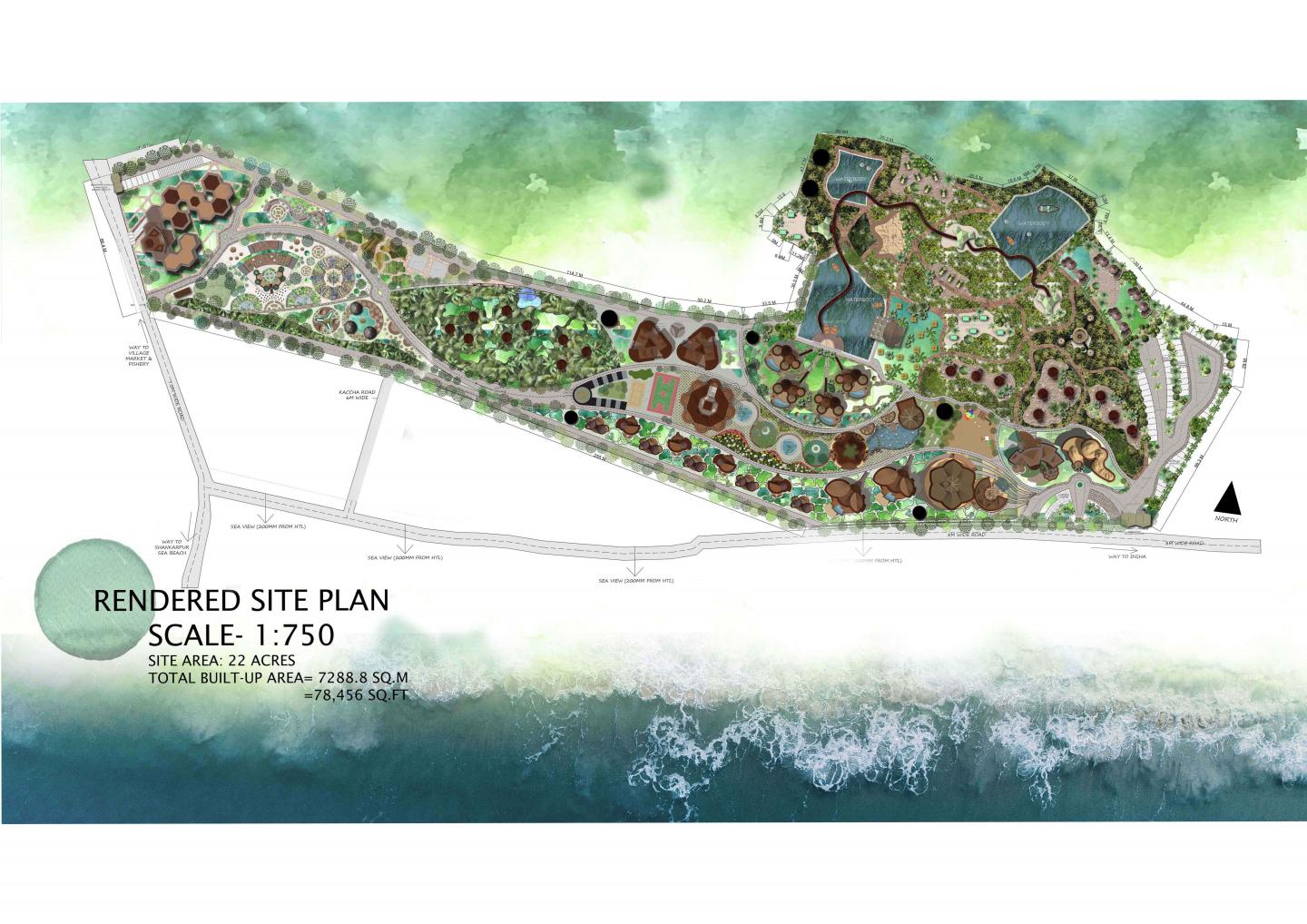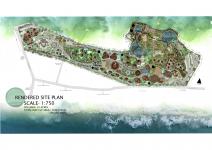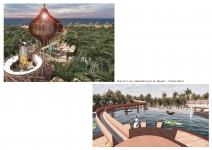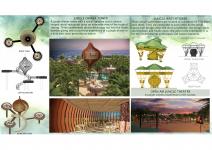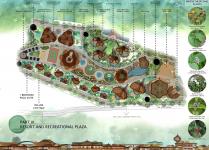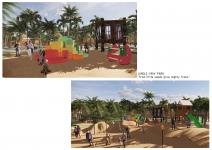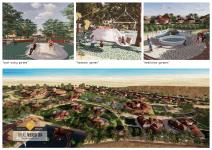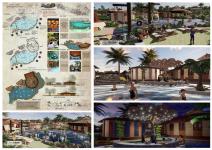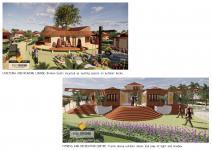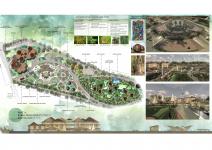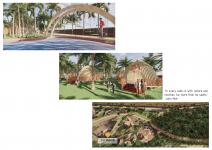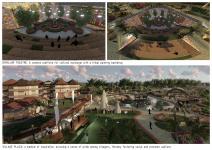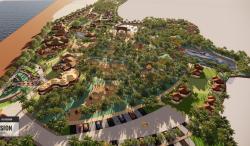“The waves lashing on to the sand dunes, the crystal-clear sea, the sun setting in the horizon and the casuarinas whispering on the beach.”
~SPRIHA
It was perhaps the scenic vision of Shankarpur, fifteen years ago, which first drew me to the place. It was a weekend getaway, a serene, isolated beach in the heart of Bay of Bengal with a small village and fishery. The soft sand dunes and white shells along the beach, the fishermen dragging boats through the dunes into the water, the coconut trees at a distance and “Thakur Da’s dokan” (Grand Pa’s shack) with its “Luchi and Aloo” (bread and potato) were among the many attractions. There were casuarina forests along the beach with nature trails and natural butterfly sanctuaries. Some of the trees had hammocks tied between them. Me and my family were walking through the forest, where we once discovered a natural butterfly sanctuary. The forests were surrounded by the fisherman’s village.
For some unknown reason, we kept going back to Shankarpur every year for vacations. It was like being in the lap of nature. However, over the years, when we went for our yearly vacations, we noticed incessant deforestation. The casuarina forests which were once whispering and roaring, withstanding all the storms, were slowly diminishing. Irresponsible tourism and commercialization had destroyed the beach. Suddenly the wildlife and natural sanctuaries were gone. The coastline had started shifting forward. There was a massive ecological disbalance and degradation.
After a few years later, in 2016, there were no more casuarina trees. The beach was eroded and deserted. It was no longer accessible. We realized that due to incessant storms and cyclones and the sea level-rising the sand dunes were swept off and now “Thakur Da’s dokan“ (Grandpa's shack) was gone.
After I joined Architecture school, I identified the relationship between the environmental, social, and economic aspects of an eco-system. I dared to challenge conventional tourism and explore how architecture can sensitively reverse the ecological disbalance. After re-visiting the village and interacting with the villagers, the following questions arose in my mind:
• How can architecture respond to natural disasters and the atrocities of nature?
• Were the incessant cyclones and rising sea-levels purely natural disasters or were these the result of devastating human activities and irresponsible coastal tourism?
• How can architecture reverse or withstand the damage of these disasters?
• Can architecture be a medium of inspiration, thereby educating local communities and tourists, fostering social and economic welfare?
• How can I, as an Architect contribute to the change and establish a paradigm shift in the tourism industry?____”REVIVAL OF A DYING
ECO-SYSTEM USING DISASTER RESILIENT ARCHITECTURE.”
As a student of architecture, I have learnt “the extent up to which the world can be designed and changed, and I aspire to be a part of the change.”
What follows in the upcoming pages, is a tribute to my childhood memories and how I have tried to reinforce my dream into reality.
“To half the decline of an eco-system it is necessary to think like an eco-system. “
________Jean Jaques Rousseau.
In a world that is shrinking and eco-systems that our dying, there rises a distinct need to extend a field of action of responsible tourism which benefits the environment and thereby the society and consequently the economic growth. While zero-emission, zero-waste and zero-poverty seem to be faraway goals, as an Architect we can discover the world without distorting it. Revitalize ecosystems instead of impoverishing and polluting them. We can build a platform for active participation and restoration of cultural heritage, exchange without arrogance and enrich local communities through eco-sensitive design. In the years to come, the relationship that we maintain with nature will determine the sustainability of the homo-sapiens that we are.
Along the coastline of Bay of Bengal, lie many pristine and scenic beaches with rich flora and fauna, namely Digha, Mohana, Talsari, Mandarmoni and Shankarpur which attract millions of tourists over the year. This region is a transitional zone in between sea and land where the casuarinas and mangrove forests were once seen to be whispering and roaring. However , over the last few years, due to incessant storms and cyclones, the sea-level rising and irresponsible coastal tourism there has been a massive ecological disbalance and degradation. Now the casuarina trees are almost gone, and the natural wildlife sanctuaries that once used to exist have all diminished.
Along the various beaches which are flooded with tourists, Shankarpur was spotted as a small village with a beach expanding up to 1200 metres. It was comparatively less explored and commercialized than the neighbouring sea beaches but had immense potential for establishing a tourism hub which contributes to its environmental, social and economic standing. It is a severely ecologically affected zone. The coastline has been severely eroded and due to the coastal inundation, there has been removal of sand dunes and forest cover. The Forest Department has been giving proposals for restoring and replanting the lost green cover. There has also been a loss of cultural resources and social disruption due to negligence and lack of employment opportunities. Despite having a soaring literacy rate of 77% the small village population is at an economic and cultural standstill. There are limited transport and communication facilities. All these factors establish a need for a platform which is conducive to the development of the whole area.
With this mindset, I shall design an Eco-tourism hub, resolutely committed to the concept of resilience. My proposal will follow the principles of sustainability and disaster resilience. It should protect the life and livelihood for coastal communities and conservation of ecological resources. It should create an interactive ground for locals and visitors so that there may be interchange of ideas and cultural exchange.
The project conceives a site-oriented approach and demonstrates how the built environment engages with the natural environment. The natural endowment of the site with its vast expanse of water bodies , parts of which are partially dry, will all be developed. Provision of nature trails and aquascape retreats will be given. Since the beach is inaccessible, natural and artificial aquascapes will play an important part of the design. Nurseries for organic farming, promote self-reliance. Local communities will be involved in cooking and serving authentic cuisines.
An eco-friendly approach and cost-effective vernacular architecture will be contextual to the place and easy to accept for the local people. It will challenge the conventional hotels and resorts in coastal regions and serve as an example or prototype to the tourism industry.
Resort developments have been planned in border zones, rather deep within ecosystem units. The vernacular colour palette has been maintained among all the built forms to establish a visual linkage. The landscaping has become an extension of the existing ecosystem, mimicking it and preventing further fragmentation.
2021
0000
The site is located 200 metres from the high tide line thereby complying with the coastal regulation norms. It covers a vast expanse of 22 acres with existing palm and coconut tree forests, four existing waterbodies and an existing temple. It is surrounded by the village on its periphery and the shoreline is 200m to its south. Two abutting roads run along its southern and western periphery. The natural endowment of the site has barren organic patches of land in intermediate spaces in the forests. These pristine areas have been left untouched to cause minimum intervention with the existing ecosystem. An FAR of 0.3 has been maintained. Owing to the coastal regulation norms and height restrictions, a horizontal expansion has been opted for. A total built-up area of 78,456 sq.m has been achieved.
Tropical cyclones cause maximum cumulative economic loss, hence disaster-resilient techniques were opted for. Most of the built forms are on stilts. This gives a base isolation to the structures and at the same time creates minimum interference with the existing landscape and green cover. The roofs were designed at an angle of 35-40 degrees to enhance resistance to high velocity winds.
TECHNOLOGICAL INTERVENTION: Floating structures that rise to survive floods___Buoys protect homes from floods and rising sea levels by making houses float as high as the flood water level rises.The buoys can be made by recycled jugs. When water levels rise tanks lift the building while vertical guideposts extending from the stilts, hold the construction in place letting it go up and down. These amphibious homes are already in use in Vietnam. This technology has been introduced by Dr. ELIZABETH after HURRICANE KATRINA.
Some solar passive techniques used are Trombe Michael's wall cooling action and the Parasol roof principle. Building orientation, shading techniques and flow of wind through fenestrations were also taken into considerations.
Locally available and recycled materials have been used for construction. The vernacular architecture of West Bengal has been explored with the use of bamboo cross-bracing, mud, and thatched roofs. Climate responsive forms have been adopted taking reference from the pre-fabricated DELTEC HOMES.
Supervisor: Ar. Anshuman Laloo
Head of Department: Ar. Maitrayee Mishra
Designer: Spriha Chakravorty
Favorited 1 times
